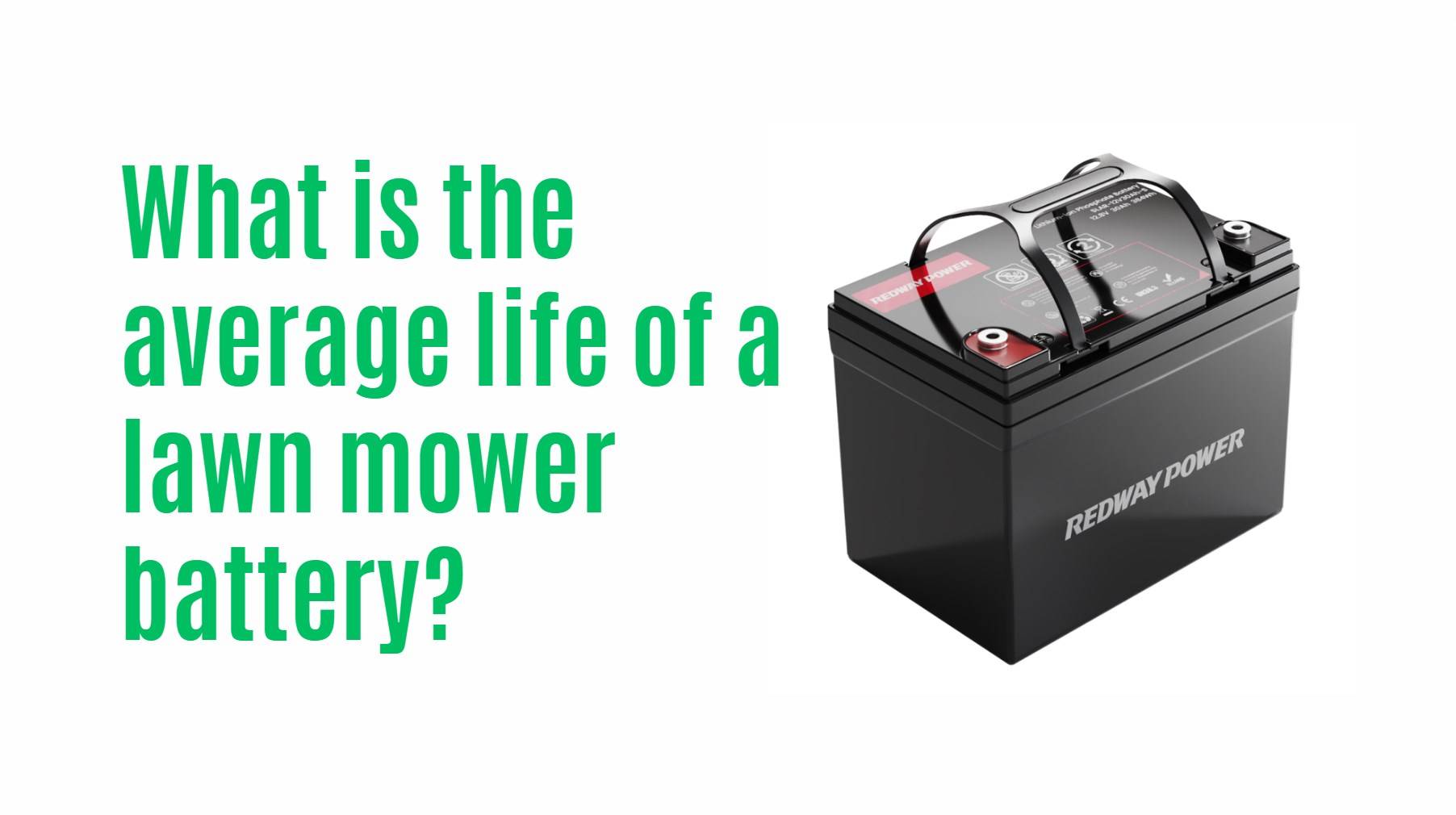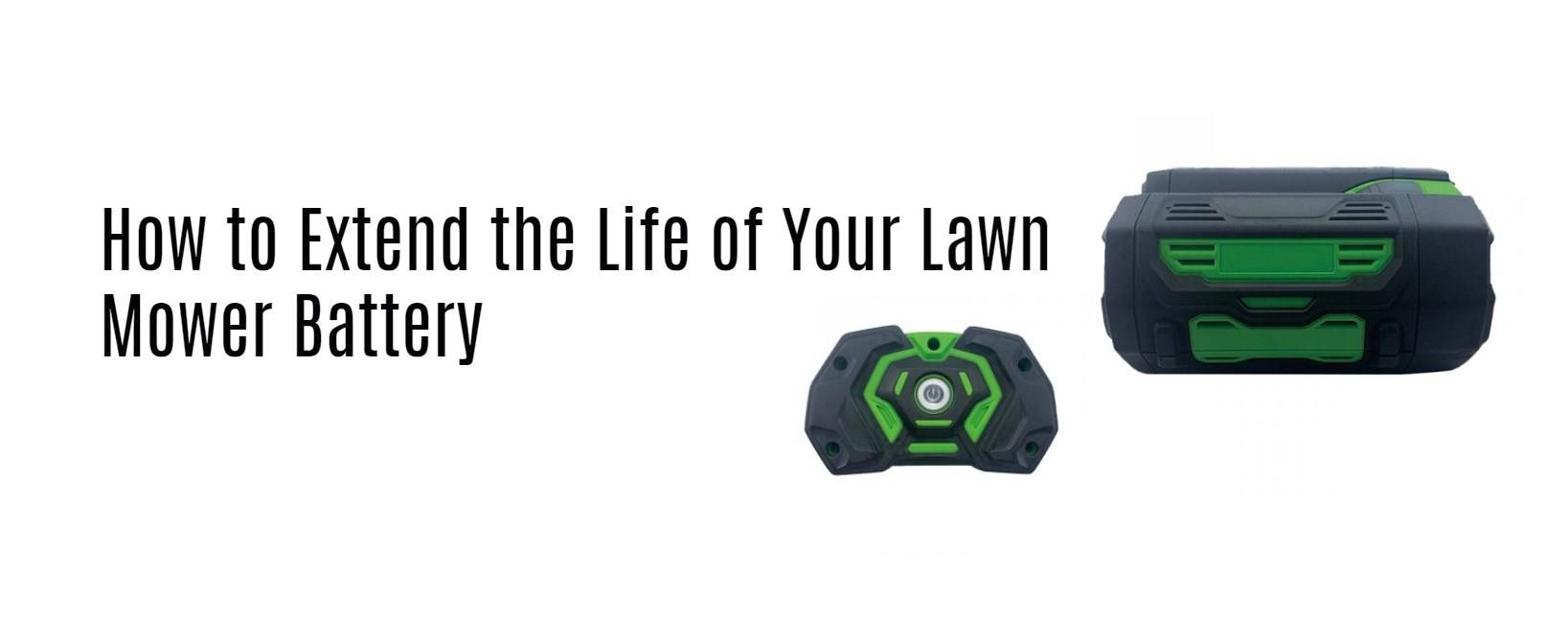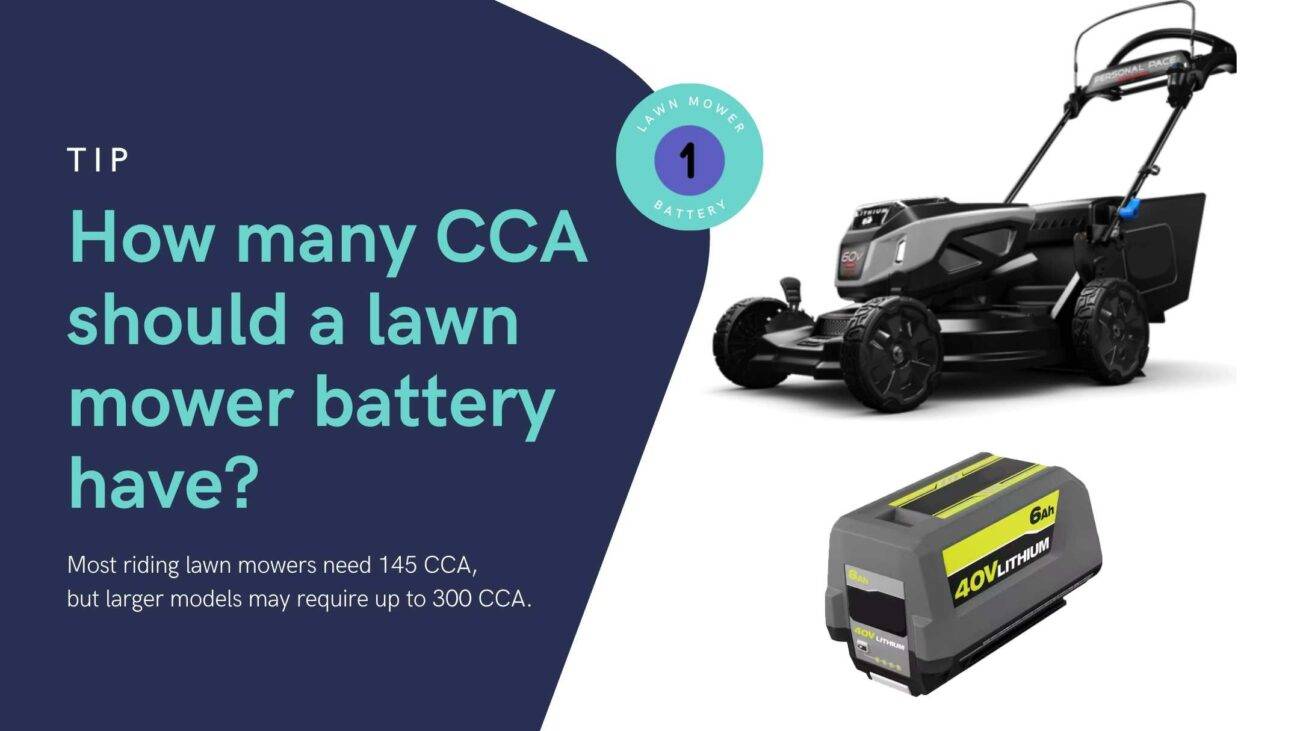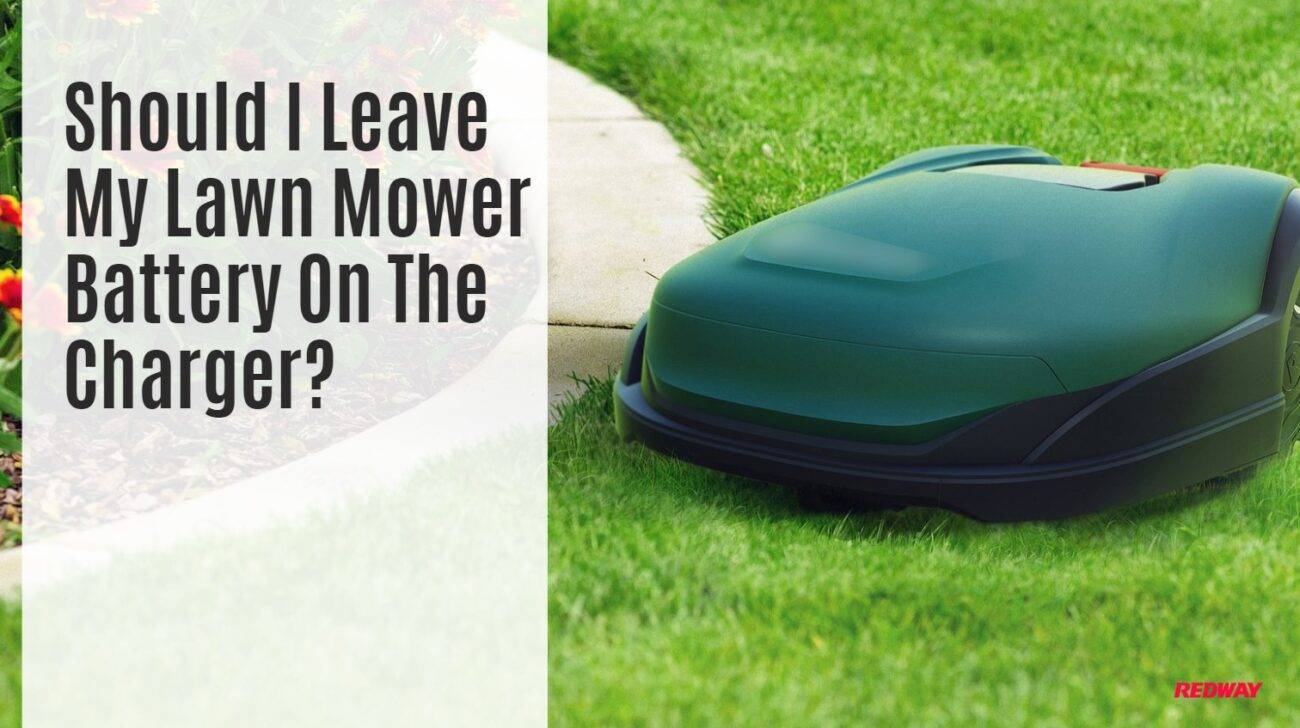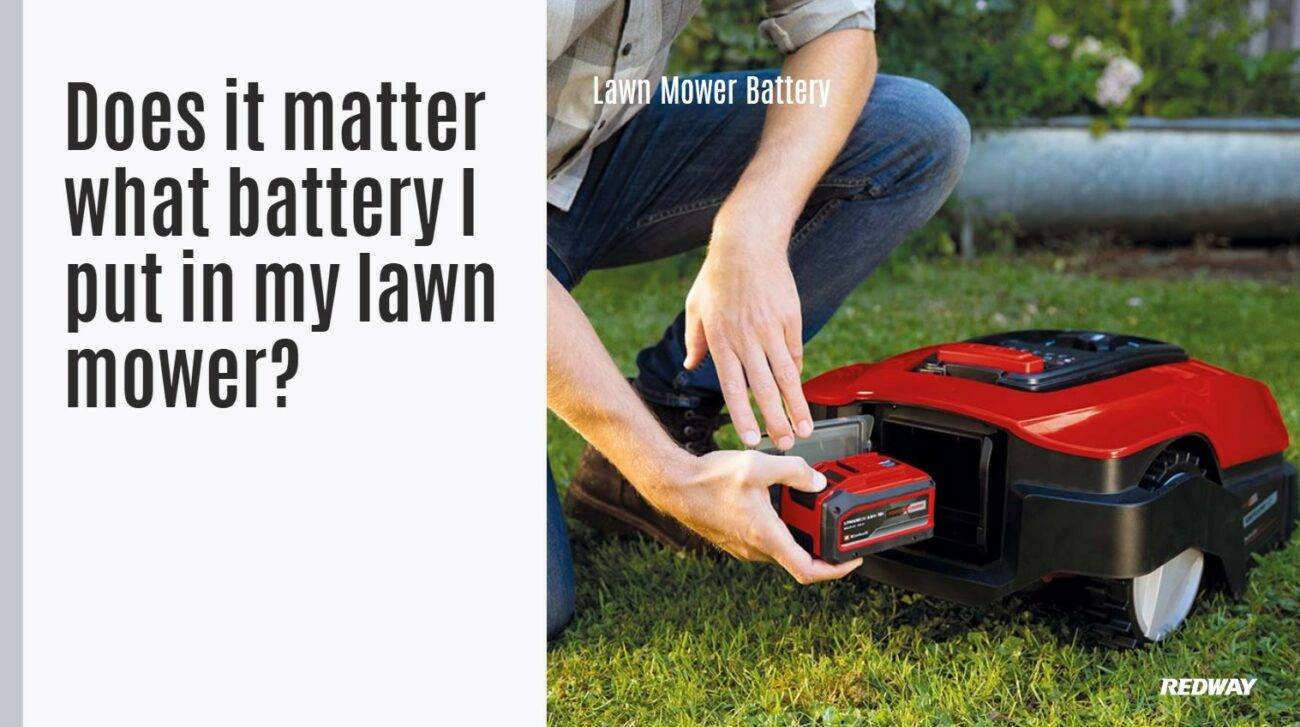Curious about how long your lawn mower battery should last? In this post, we’ll cover factors influencing battery lifespan, types of batteries, maintenance tips, signs of replacement, and how to choose the right one. Get ready to optimize your mowing experience and keep your lawn looking pristine!
The Importance of a Lawn Mower Battery
A lawn mower battery is essential for smooth operation. It provides power to start the engine and other components, ensuring reliable engine starts and powering headlights, safety switches, and electronic ignitions. A good battery ensures effective functioning and enough power for all mower functions.”
- Starting Power: The battery provides the necessary energy to start the mower’s engine, ensuring easy starts without the need for manual effort.
- Powering Additional Features: Features like electric start systems and headlights rely on the battery’s power, enhancing convenience and functionality during mowing.
- Consistent Cutting Power: Maintaining a healthy battery ensures consistent cutting power, preventing uneven grass cutting and maintaining a neat lawn appearance.
Factors that Affect the Life of a Lawn Mower Battery
The lifespan of a lawn mower battery depends on various factors such as battery quality, usage patterns, temperature exposure, maintenance, and charging habits. Understanding these factors can help prolong the battery’s life and ensure optimal performance.
- Battery Quality: High-quality batteries typically last longer than cheaper ones due to better construction and materials.
- Usage Patterns: Frequent and prolonged use of the lawn mower can strain the battery, reducing its lifespan over time.
- Temperature Exposure: Extreme temperatures, both hot and cold, can accelerate battery deterioration, so storing the mower in moderate conditions is ideal.
- Maintenance: Regular cleaning of terminals and proper storage in a cool, dry place when not in use can extend the battery’s life.
- Charging Habits: Following manufacturer guidelines for charging times and avoiding overcharging or undercharging is essential to prevent premature battery failure.
By considering these factors and implementing appropriate measures, you can maximize the longevity of your lawn mower battery and ensure reliable performance over time.
Different Types of Lawn Mower Batteries
Lawn mower batteries come in various types, each with its own advantages and characteristics. Understanding these options can help you choose the best battery for your mower based on your needs and preferences.
- Lead Acid Batteries: These traditional batteries are affordable and reliable but require regular maintenance like checking electrolyte levels.
- Lithium-ion Batteries: Lightweight and long-lasting, lithium-ion batteries have a high energy density, making them popular for their performance and compact size.
- Nickel-Cadmium (NiCd) Batteries: Offering durability and high discharge rates, NiCd batteries need proper care to avoid damage from overcharging or deep discharges.
- Nickel-Metal Hydride (NiMH) Batteries: Similar to NiCd but without toxic cadmium, NiMH batteries have a longer lifespan and are more environmentally friendly.
- Lithium Iron Phosphate (LiFePO4) Batteries: Known for safety and efficiency, LiFePO4 batteries offer high energy efficiency and excellent cycle life.
Consider factors like budget, usage requirements, and environmental concerns when choosing the right battery for your lawn mower.
How to Extend the Life of Your Lawn Mower Battery
To extend the life of your lawn mower battery, regularly inspect and clean the terminals, charge it during the offseason, and store it in a cool, dry place away from extreme temperatures. These steps will help maintain the battery’s performance and ensure its longevity. Remember to keep your battery in optimal condition for a reliable mowing experience.
- Clean the terminals regularly to remove dirt and debris that can affect performance.
- Keep the battery charged, even during periods of non-use, to prevent sulfation and maintain capacity.
- Avoid overcharging by following manufacturer guidelines and not leaving the battery connected for too long.
- Store the battery in a cool, dry place to prevent damage from extreme temperatures.
- Check for loose connections periodically to ensure proper electrical flow and performance.
Signs that Your Lawn Mower Battery Needs to be Replaced
Signs that your lawn mower battery needs to be replaced include difficulty starting the mower, slow or weak engine cranking, diminished battery life, corrosion or leakage on the battery, and inconsistent power output. These signs indicate a weak or failing battery that requires replacement. Consult your mower’s manufacturer guidelines for specific maintenance and replacement schedules.
- Difficulty Starting: If you’re struggling to start your mower’s engine despite repeated attempts, it’s likely due to a failing battery.
- Slow Cranking: A battery on its last legs may cause the engine to crank slowly, indicating insufficient power.
- Dimming Lights: Dim or flickering lights while mowing suggest that the battery is struggling to maintain power levels.
- Short Run Time: If your mower loses power quickly and requires frequent recharges, it’s a sign that the battery can no longer hold a charge effectively.
- Age of Battery: Consider the age of your current battery; if it’s approaching or exceeded its typical lifespan of three to five years, replacement may be imminent.
Keeping an eye out for these signs ensures you can replace your battery before it fails completely, maintaining your mower’s performance.
Tips for Choosing a Replacement Lawn Mower Battery
When choosing a replacement lawn mower battery, consider compatibility with your mower model, decide between lead-acid and lithium-ion batteries based on your needs, match the size and voltage to your mower’s requirements, and ensure adequate capacity for your mowing needs. Proper maintenance includes keeping terminals clean, tightening connections, charging during the offseason, and storing in a cool, dry place.
- Compatibility: Refer to your mower’s specifications to ensure the replacement battery matches the type, voltage, and capacity required for your model.
- Quality Brands: Prioritize renowned brands known for reliability, even if they come at a slightly higher cost, as they often offer superior performance and longevity.
- Battery Type: Decide between traditional lead-acid batteries and newer lithium-ion options, considering factors like lifespan and maintenance needs.
- Warranty Coverage: Look for batteries with comprehensive warranties to safeguard against defects or premature failure, and review the terms thoroughly.
- User Reviews: Consult online reviews and seek recommendations from other users to gain insights into the performance and durability of various battery brands and models.
By considering these factors, you can confidently select a replacement battery that enhances your mower’s performance and longevity, ensuring smooth and efficient mowing sessions.
New Insights
Here are the latest articles discussing the average life of a lawn mower battery:
- House Grail 216 states that a lawn mower battery typically needs replacement every 3–5 years, but this can vary depending on the battery type and usage. The article also mentions that the lifespan can be as little as 1 year under certain conditions and provides tips for extending the battery life, such as proper charging and maintaining temperature.
- Garden Tool Expert 217 discusses the factors influencing the lifespan of a lawn mower battery, including charging practices, temperature, storage, and maintenance. It highlights that lead-acid batteries last 1-4 years, while lithium-ion batteries can last 3-5 years over 500 cycles, and emphasizes the importance of proper care to extend the battery life.
- Lawn Mower Guru 218 provides a clear answer, indicating that with proper care, a lead-acid lawn mower battery should last about 3 to 4 years, while lithium-ion batteries can be expected to function for up to 5 years or 500 charging cycles. The article also differentiates between riding mower and push mower batteries and addresses common questions about battery life expectancy.
These articles collectively offer insights into the average life expectancy of lawn mower batteries and the factors that can influence their longevity, such as battery type, usage, and maintenance practices.
“The average life of a lawn mower battery is a critical consideration for both homeowners and professionals, with lead-acid batteries generally lasting 3-4 years and lithium-ion batteries extending up to 5 years or 500 charging cycles. Proper maintenance, including correct charging practices and temperature management, plays a pivotal role in maximizing battery lifespan. As a lithium battery expert, I recommend selecting high-quality batteries and following the manufacturer’s guidelines to ensure optimal performance and longevity.” — Mr. Raza, Lithium Battery Expert from Redway Power
FAQs
Are lawn and garden batteries lead acid?
Lawn and garden batteries commonly used in riding mowers come in different chemistries. While lead acid batteries are frequently used in this application, there are also options such as lithium-ion or lithium iron phosphate batteries available on the market. It is crucial when choosing a replacement battery for your riding mower to ensure that the new battery you select has the same chemistry as the original one.
How many cranking amps does a lawn mower battery have?
A lawn mower battery typically has a lower number of cold cranking amps (CCA) compared to a standard car battery. For most lawn mowers, you would want a battery with a minimum CCA rating of 145. You can find the specific CCA requirements for your lawn mower in the owner’s manual or on the manufacturer’s website.
What size battery does my lawn mower need?
To determine the size of battery needed for your lawn mower, it is important to understand that lawn mower batteries differ from car batteries in terms of size. Lawn mower batteries are generally much smaller than car batteries. The Battery Council International (BCI) has categorized batteries into various group sizes to facilitate finding the correct fit for your lawn mower. Most lawn mower batteries typically fall under the Group U1 category.
In addition to the group size, you will need to consider the terminal type and position of the battery. This information is outlined in the group battery sizing standards. For instance, Group U1 batteries are available in two terminal options: U1L and U1R. U1L batteries have the positive terminal located at the top left corner, while U1R batteries have the positive terminal positioned at the top right corner. When selecting a replacement battery for your lawn mower, ensure that you identify the correct terminal positioning required by your specific mower model.
How do I know if my lawn mower battery is 6 volt or 12 volt?
To determine whether your lawn mower battery is 6 volt or 12 volt, the first step is to identify your mower’s voltage requirement. While most riding mowers typically use a 12 volt battery, smaller mowers may rely on a 6 volt battery instead.
If you are uncertain about the battery voltage your mower needs, you have several options for finding out. One way is to check the voltage of your current battery. If that information is not readily available, consult your owner’s manual. Additionally, you can visit the manufacturer’s website for specific details regarding the battery voltage recommended for your lawn mower. By referencing these sources, you can accurately determine whether your lawn mower requires a 6 volt or 12 volt battery.
Should you take the battery out of your lawn mower for the winter?
During winter, it is advisable to remove the battery from your lawn mower. Cold temperatures can harm the battery, especially if it’s not fully charged. Properly storing the battery can help prevent damage and prolong its lifespan. Taking this precaution can ensure that the battery remains in good condition for future use.
What is the most common cause of battery corrosion?
The most common cause of battery corrosion is the buildup of sulfate crystals on the battery terminals. These crystals form when the battery discharges and releases sulfuric acid vapor, leading to poor electrical connections and reduced battery performance over time. Regular cleaning and proper maintenance can help prevent corrosion and ensure optimal battery performance.
How long should you leave a battery charger on a lawn mower battery?
To properly charge a lawn mower battery, leave the battery charger connected for at least 12 hours or until the charger indicates a full charge. Follow these steps: turn off the mower, connect the charger’s positive and negative cables securely to the corresponding battery terminals, and choose a compatible charger with automatic shut-off and appropriate amperage for efficient and safe charging.
How do you know what battery charger you need?
To determine the battery charger you need, follow this rule of thumb: the charger should be 10% – 20% of the amp-hour (Ah) rating of the battery. For example, a 100Ah battery would require a minimum 10 Amp charger. It’s important to keep the charger size within 30% of the total capacity to avoid overcharging. Following these guidelines ensures optimal charging for your battery.
How do you add water to a battery?
To add water to a car battery, follow these steps: ensure safety with protective eyewear and gloves, open the battery cell caps, check the water level above the plates, add distilled water using a turkey baster or funnel, replace the caps securely, and only add water after charging is complete. Regular maintenance is crucial for battery health.
Do you need to add water to a lawn mower battery?
Lawn mower batteries typically do not require water. Unlike car batteries, most lawn mower batteries are sealed and maintenance-free. They are designed to retain their electrolyte and do not need regular water additions. However, it’s essential to check your specific battery type and consult the manufacturer’s instructions to be sure. Sealed batteries eliminate the need for water addition.

